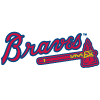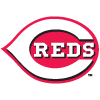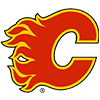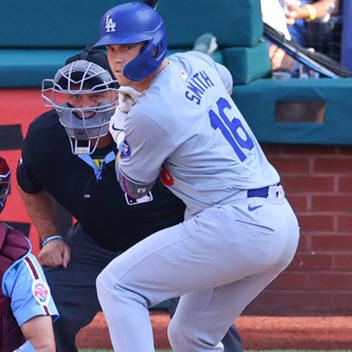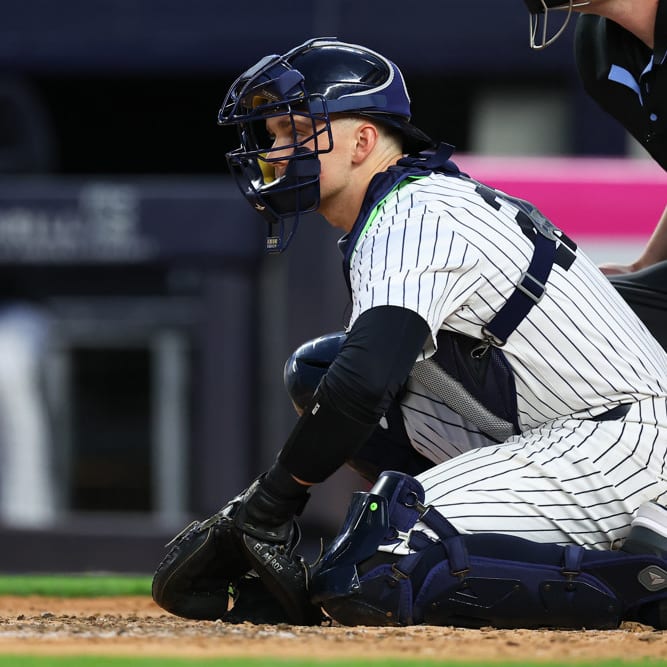Thanks for reading the other player-specific reports. The subject of bounce-back players can become repetitive, but I hope I did enough to make each spin unique and useful.
Let's move to our final names to know, listed in order of NFBC average draft position as of Feb. 26:
Marcus Stroman, SP, Blue Jays (161.43)
The right-hander is now two years removed from surgery to repair the torn ACL in his left knee. A healthy plant leg should help his delivery remain clean, which should lead to better break on his pitches.
Plus, his 4.37 ERA last year was accompanied by a 3.71 FIP (and a 3.41 xFIP). Stroman's control remained pristine (2.38 BB/9), and the homer allowance (0.93 per nine) was notable but easily correctable, considering he's one of the game's biggest groundball pitchers at 60.1 percent. Also, the left-on-base percentage was an absurdly low 68.6, meaning he was dealing with plenty of bad luck.
Stroman's strikeouts should rise, considering his 9.3 swinging-strike rate last year, and he's a season removed from an elite 67.0 first-strike percentage. Those two numbers put him on course for a revelation in punch-outs.
The 25-year-old is the safest rebound candidate on this list. Put it on the board: He'll have a better fantasy season than last year's breakout darling Aaron Sanchez, whom I loved heading into last year. Lesson: Adjust expectations
Thanks for reading the other player-specific reports. The subject of bounce-back players can become repetitive, but I hope I did enough to make each spin unique and useful.
Let's move to our final names to know, listed in order of NFBC average draft position as of Feb. 26:
Marcus Stroman, SP, Blue Jays (161.43)
The right-hander is now two years removed from surgery to repair the torn ACL in his left knee. A healthy plant leg should help his delivery remain clean, which should lead to better break on his pitches.
Plus, his 4.37 ERA last year was accompanied by a 3.71 FIP (and a 3.41 xFIP). Stroman's control remained pristine (2.38 BB/9), and the homer allowance (0.93 per nine) was notable but easily correctable, considering he's one of the game's biggest groundball pitchers at 60.1 percent. Also, the left-on-base percentage was an absurdly low 68.6, meaning he was dealing with plenty of bad luck.
Stroman's strikeouts should rise, considering his 9.3 swinging-strike rate last year, and he's a season removed from an elite 67.0 first-strike percentage. Those two numbers put him on course for a revelation in punch-outs.
The 25-year-old is the safest rebound candidate on this list. Put it on the board: He'll have a better fantasy season than last year's breakout darling Aaron Sanchez, whom I loved heading into last year. Lesson: Adjust expectations year to year based on market value.
Matt Wieters, C, Nationals (201.53)
The 30-year-old joins another dangerous lineup, and shockingly, Nationals Park was friendlier for hitters than Baltimore's Camden Yards last year. Even in his less than enthusiastic 2016, Wieters clubbed 17 home runs and had a noteworthy 33.0 percent hard-contact rate.
Now that he has a job and is another season removed from his Tommy John surgery, he could roar back at the plate. There's plenty of profit to be made in the middle rounds of mixed drafts.
Sonny Gray, SP, Athletics (207.30)
His already meager strikeout rate reached a career-low 7.23 last year, while his walk rate climbed to 3.23 per nine. Most important, he coughed up 1.38 homers per nine.
During his elite years, the righty walked a thin line, performing well because he doesn't overpower hitters. Still, Gray's home park always offers a chance to use him at least as a home matchup start, and he does have the history of those jaw-droppingly low ERAs (however falsely propped up they were) from 2013 to 2015.
I'm always a fan of buying a former draft darling who's turned into an outcast. Still, I don't think the payoff matches that of his surname mate, the Rockies' Jon Gray, nor my next three entries.
Vince Velasquez (186.45); Aaron Nola (210.15), SP, Phillies
The crowd is high on Velasquez correcting his 4.12 ERA, which he couldn't correct before the organization's innings management kicked in. If healthy, the 24-year-old could continue his ascension in something close to 170 frames, with elite K/9 prowess.
Nola is a more volatile case, but the numbers favor him: 9.81 K/9 … 2.35 BB/9 … 4.78 ERA … 3.08 FIP and xFIP. Which of these doesn't belong?
Thank that 60.6 left-on-base percentage for that terrible clash of numbers. He's a groundballer with equally competent strikeout tools. It's logical to wonder how long he was pitching with that UCL injury last year. Nola didn't have much velocity on his sinker.
This price may be a tad high given the elbow risks, but the indicators paint the picture of an elite pitcher.
Michael Pineda, SP, Yankees (212.11)
The frustrating but often dazzling right-hander deserves a place on this list every year -- sadly. Still, look at these underlying peripherals the last two years:
| YEAR | ERA | FIP | xFIP | K/9 | BB/9 | BABIP | HR/9 | F-Strk% | SwStrk% |
| 2015 | 4.37 | 3.34 | 2.95 | 8.74 | 1.18 | .332 | 1.18 | 63.8 | 11.9 |
| 2016 | 4.82 | 3.80 | 3.30 | 10.61 | 2.72 | .339 | 1.38 | 67.3 | 14.1 |
That 14.1 percent swinging-strike rate led all qualified major league pitchers. Pineda's problems are mostly with sequencing and flattened breaking pitches, problems that can be corrected with a new approach.
These stats call him an elite pitcher, save for the BABIP and HR/9. Before Pineda's age-28 season, I'm going to keep chasing that elusive but possible Cy Young year.
Adam Wainwright, SP, Cardinals (226.89)
The torn Achilles that kept him out in 2015 might've still impacted him in 2016 (4.62 ERA). His shaky K/9 finally got back at him, though, so his soft-tossing arsenal isn't worth fulling banking on.
Still, the 35-year-old has the guile to rebound with low expectations. Unfortunately, the NFBC crowd is more optimistic than I am. It's will take a lot for Waino to deliver even a desirable fraction of what he did in the past.
Of course, as your sixth mixed starter, he'll have to dig an even deeper floor for himself to disappoint.
Taijuan Walker (234.03); Shelby Miller (436.98), SP, Diamondbacks
I panned Miller last spring because his numbers were better than his indicators. That worked out. Conversely, I loved Walker. His makeup was sparkling, but home runs thrashed him. Now, Walker joins Miller, stuck in one of the most hitter-friendly parks.
But new D-backs general manager Mike Hazen and manager Torey Lovullo bring a former Red Sox approach to analytics, and hopefully pitcher development. If one is paired with Jeff Mathis or Chris Iannetta, highly capable pitch-framing catchers, that could help his pitch mix and ability to paint the corners.
They're not the most attractive rebound targets, and any daring owner should handle using them with care, but both are worth a bench spot in mixed leagues for the potential that least one pops off.
Jason Heyward, OF, Cubs (253.16)
A talented Jason who comes through on a more consistent basis – our own Jason Collette wrote a must-read breakdown on The J-Hey Kid's new swing, so I'll make this as quick as possible.
This renovation intrigues me. Heyward looks more balanced with his weight back – a must for hitters to generate maximum power.
Another "last year's trash" asset: Sure, he's a polarizing figure, but when there's a potential five-tool talent – and five-category fantasy performer -- who may have perfected his swing path and will cost me mere pennies, count me in.
Pablo Sandoval, 3B, Red Sox (367.57)
Come on. That price is basically a free lotto ticket.
I'm not saying Sandoval will go back to his 20-homer days, and that uncertainty makes him a risky play as a corner infielder. Still, his ligther frame – to whatever extent at which it winds up when April comes – but he's a career .287/.339/.451 bat who might wind up in a friendly run-producing spot in a solid, at least, lineup.
If you're in a 15-team mixer and you need a utility or bench player … ¯\_(ツ)_/¯
(Forget Kung Fu Panda. Sandoval is the human shrug emoji.)








